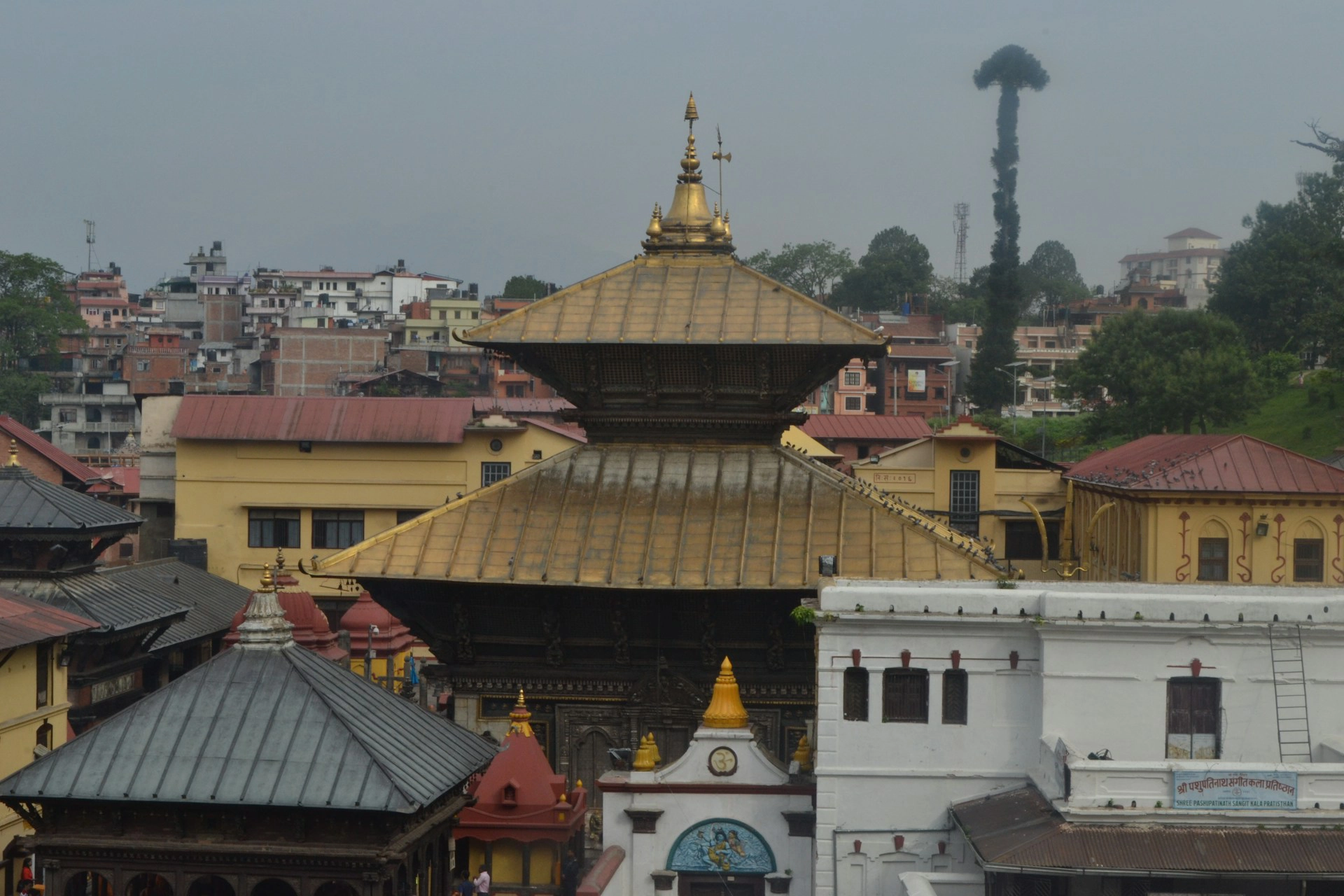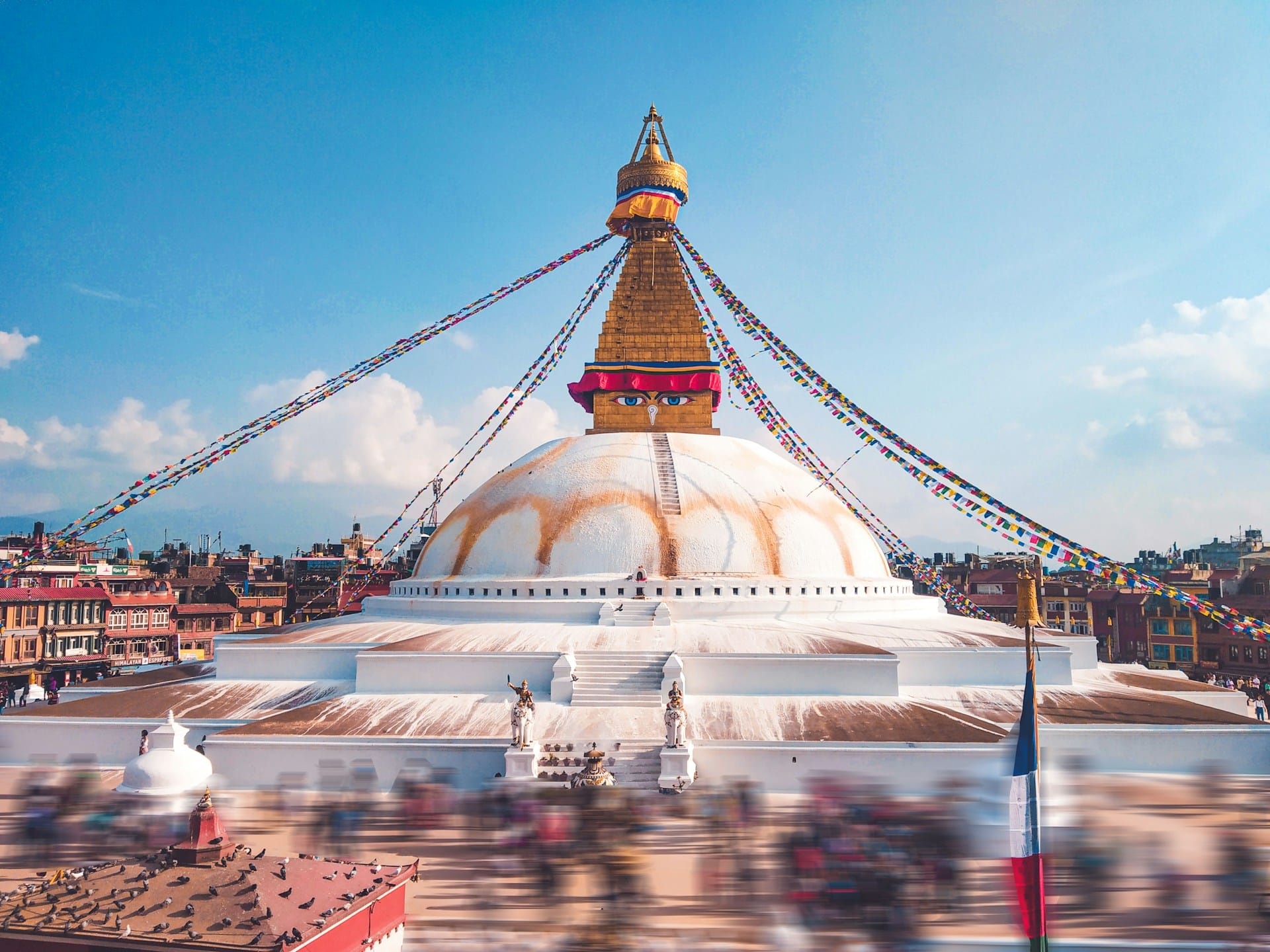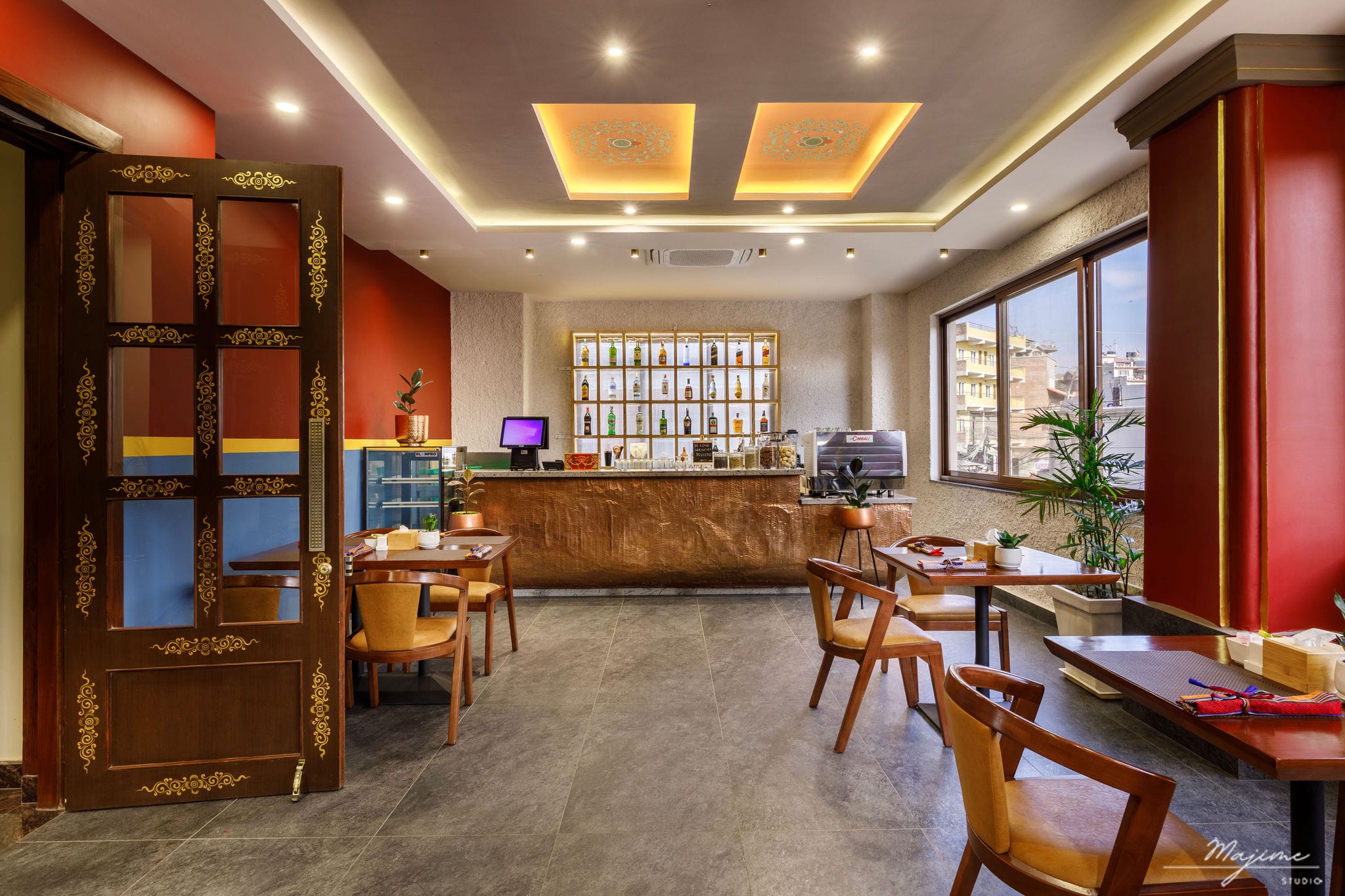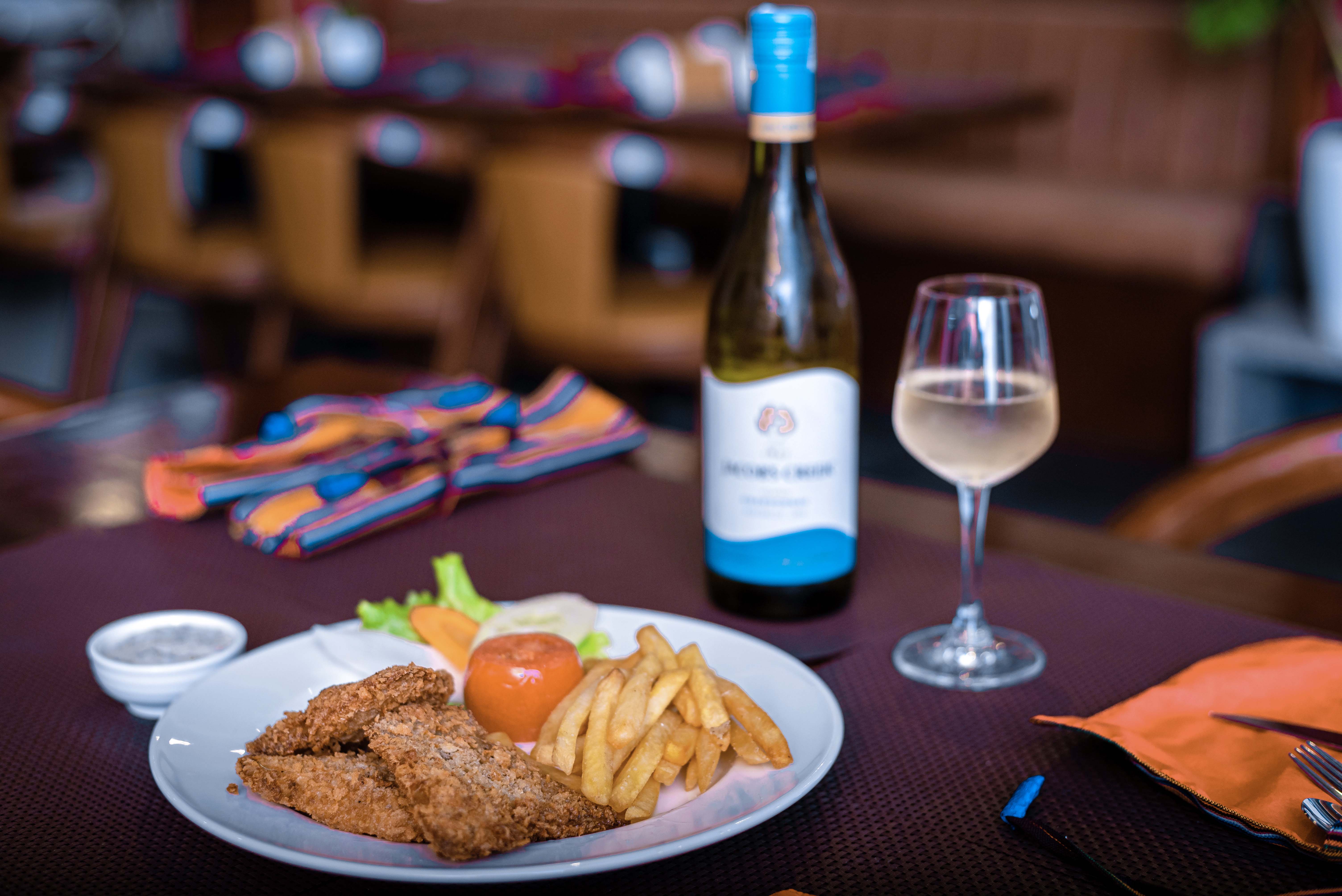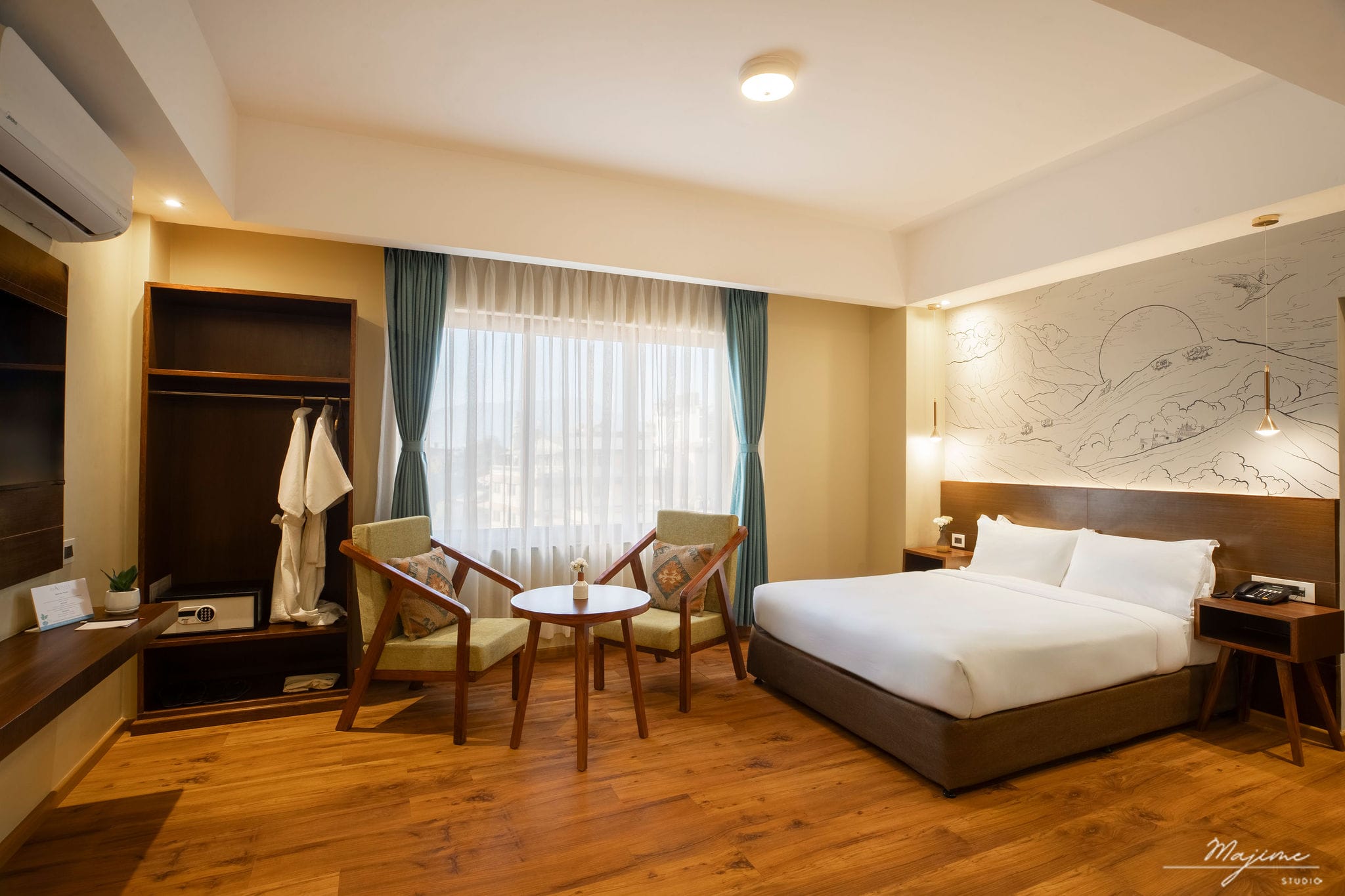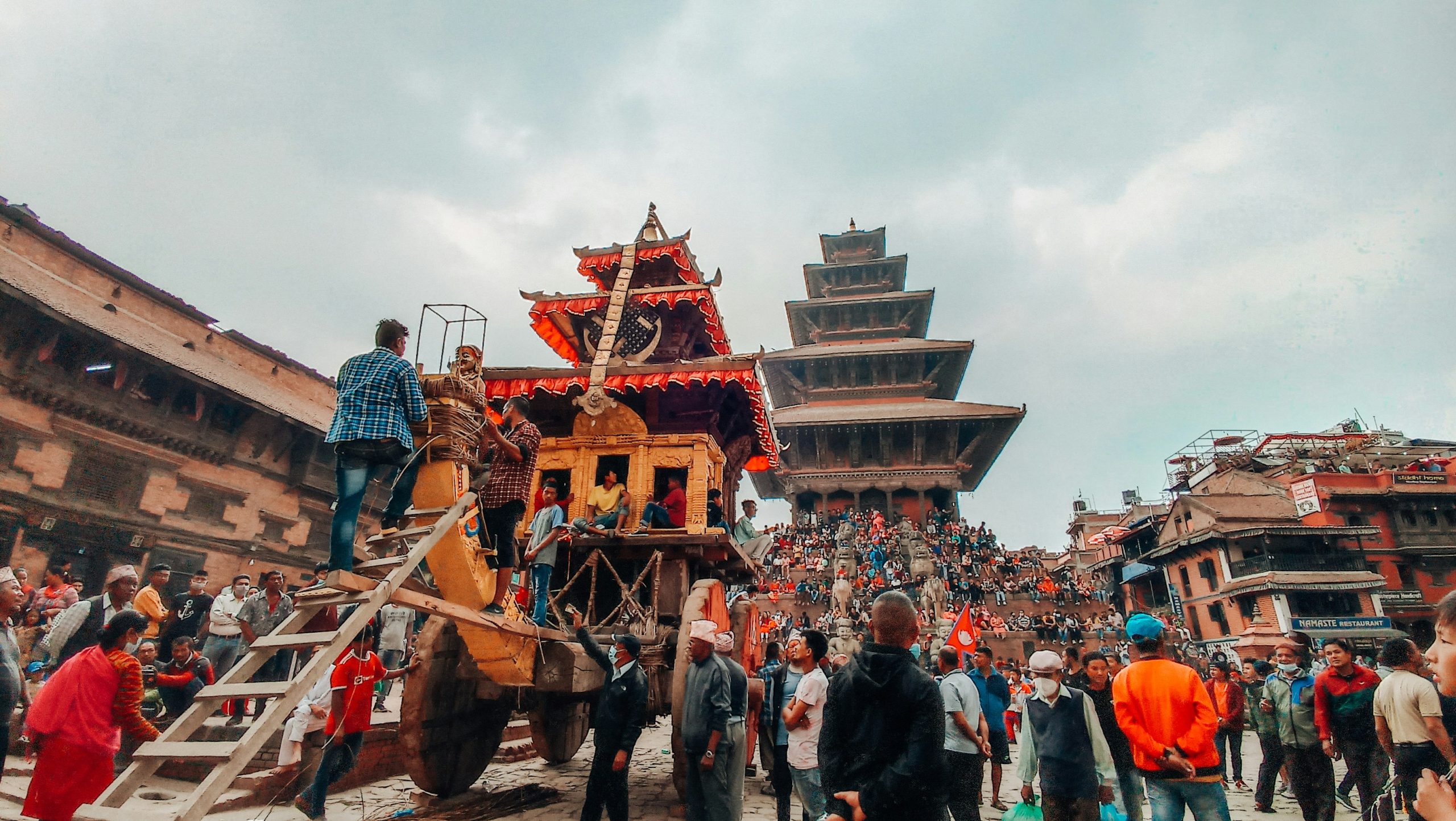Kathmandu is a city best felt, not just seen. This guide to Kathmandu invites you to wander its streets, where you’ll find ancient temples beside lively tea stalls, prayer flags fluttering above narrow alleys, and the scent of incense drifting through the air. It’s a place where calm and chaos blend beautifully—encouraging you to slow down, look around, and take it all in.
For us here at Atisha Hotel, Kathmandu isn’t just a stopover for travelers heading to the mountains—it’s home. Every lane tells a story, every courtyard hides a bit of history, and every morning feels different from the last.
Planning to explore the city? Well, this guide helps you with the details from locals who love it deeply. These are the places that hold the heart of Kathmandu—the well-known sites, yes, but also a few corners you might not find on a typical map.
Also, witness the city from a new perspective with Atisha Hotel’s eco-friendly EV van service. You can travel through Kathmandu’s timeless landmarks like Swayambhunath, Pashupatinath, Kathmandu Durbar Square, or other amazing spots. This comfortable and eco-friendly way lets you experience the rhythm of local life while avoiding the usual travel rush.
You can book the EV van efficiently by contacting us on WhatsApp at +977-9801234567. We’ll be happy to help you plan a route that matches your interests and pace.
Must-See Attractions in Kathmandu
Boudhanath Stupa
Let’s start right where we are—Boudhanath, the spiritual center of Tibetan Buddhism in Nepal and one of the largest stupas in the world.
Walk around it once and you’ll feel the energy of the place. Monks in maroon robes spin prayer wheels, older women murmur mantras under their breath, and pigeons flutter above as the golden eyes of Buddha look calmly over the valley.
You must visit early in the morning or at dusk, when butter lamps glow and the stupa shines softly against the sky. In those quiet hours, the city seems to slow down. You can sit over a rooftop café nearby and sip a cup of butter tea, watch prayer flags flutter in the breeze. This will let you understand why locals hold this place so close to their hearts.
For guests staying at Atisha Hotel, the stupa is just a short walk away—it’s the perfect start or end to any day in Kathmandu.
Pashupatinath Temple
A short ride from Boudha takes you to Pashupatinath, the most sacred Hindu temple in Nepal. This is where devotion takes its deepest form. Along the banks of the Bagmati River, priests chant, bells ring, and smoke from ceremonial fires rises slowly into the sky.
It’s a place that reminds you how fragile and sacred life is. You’ll see people praying, bathing, meditating—and even cremation ceremonies taking place by the riverside. It may feel intense, but it’s a powerful window into how Nepalis see life and death as part of the same journey.
If you go in the evening, stay for the Sandhya Aarati ceremony. The chants, the sound of conch shells, the flicker of oil lamps—it’s pure energy. You don’t have to understand every ritual to feel it.
Kathmandu Durbar Square
You travel back in time as soon as you enter Kathmandu Durbar Square. Initially inhabited by Nepal’s royal family, it is today a bustling area where everyday life and history meet.
Temples with carved wooden windows line the square, locals feed pigeons, and kids run across the ancient stone courtyards. Don’t miss the Kumari Ghar, home of the living goddess Kumari—a young girl worshipped as a manifestation of divine energy.
Even after the 2015 earthquake, much of the old charm remains. Stroll, look up at the carvings, listen to the bells, and you’ll begin to feel the rhythm of old Kathmandu still pulsing here.
Swayambhunath
Perched on a hill overlooking the city, Swayambhunath, or the Monkey Temple, is one of those places that somehow feels ancient and alive at the same time.
The climb up the stairs can leave you breathless—but so does the view from the top. The eyes of Buddha painted on the golden spire seem to follow you, not in judgment but in quiet understanding.
Come early, before the tour buses arrive, and you’ll meet locals feeding monkeys, lighting butter lamps, and turning prayer wheels as the sun rises over Kathmandu. It’s peaceful, sacred, and deeply human all at once.
Thamel
Every traveler ends up in Thamel at least once, and for good reason. It’s Kathmandu’s buzzing, colorful heart—a maze of streets lined with souvenir shops, trekking stores, cafés, and live music bars.
You can spend hours just walking here, bargaining for scarves or tasting your way through momos, thukpa, and Newari snacks.
If you’re in the mood for something slower, duck into one of the quieter cafés tucked away behind the main road. There is always a place where time appears to stop, music hums quietly, and the creative pulse of the city feels close, even in the middle of the commotion outside.
Garden of Dreams
Not far from Thamel, hidden behind tall gates, lies the Garden of Dreams—a beautifully restored neoclassical garden that feels like another world.
Sit by the pond, watch the koi fish swim, and listen to the sound of water trickling over stone. Locals come here to escape the city noise, to read, talk, or breathe. It’s one of those small, unexpected corners of Kathmandu where you realize how much beauty this city holds if you slow down enough to notice.
Hidden Gems Worth Discovering
Kathmandu’s magic isn’t only in its famous sites — it’s also in the little corners that tourists often miss.
Kirtipur, perched on a hill, is an old Newari town that feels almost frozen in time, remarkably unspoiled, and is only a short drive southwest of the capital. You will get to explore the Bagh Bhairav Temple, which provides expansive views of the valley, observe residents drying chilies on rooftops, and stroll through tiny stone passageways.
Asan Bazaar, near Durbar Square, is where locals shop for spices, vegetables, and everything in between—it’s Kathmandu’s soul in motion. It’s loud, vibrant, and really fascinating—stalls brimming with brassware, tea, veggies, and spices. Families haggling, monks strolling by, and children chasing pigeons are all visible. For photographers or anybody who enjoys local culture, it’s the ideal location.
Kopan Monastery, situated on a hill with views of the entire city, is not far from Boudha. It’s a terrific place to spend a few hours contemplating, and it’s well-known for its meditation retreats and kind monks. You may explore the gardens, hear the chants, and take in the expansive valley vista even if you’re not there for a retreat.
Budhanilkantha Temple, located just north of the city, is home to a giant stone figure of Lord Vishnu lounging in a pool of water. This temple is one of Nepal’s most distinctive places of worship and is greatly admired by the locals but frequently ignored by tourists.
Each place shows a different side of the valley—less polished, more real, and always full of life.
Knowing Kathmandu at its best
You can’t honestly know a city until you’ve tasted it. Kathmandu’s food tells its own story—one of spice, warmth, and heritage. Start your morning with a plate of bara and egg, savor juicy momos for lunch, and end your day with a comforting dal bhat that feels like home.
For street food lovers, the narrow lanes of Asan and Patan are full of life. The air carries the scent of chatpate, fried sweets, and sizzling snacks. And when you crave something slower, the cafés around Boudha offer peaceful corners where time seems to pause—you can sip tea, watch prayer flags dance in the breeze, and listen to the soft hum of life around the stupa.
After a day of exploring, returning to Atisha Hotel feels like stepping into balance. Inspired by the spirit of mindfulness, our space is calm yet connected—close to the rhythm of Boudha, but tucked away enough to let you unwind. From your window, you might hear the distant chanting of monks or see the golden stupa glowing beneath the evening sky.
Kathmandu is more than a destination; it’s a feeling that grows on you. This guide to Kathmandu reveals a city that moves at its own rhythm, where every street, smile, and sound tells a story of life lived fully in the moment. You might come searching for adventure or calm, but you’ll leave with a quiet sense of belonging that never really fades.
When you’re ready to rest and reflect, Atisha Hotel will be here—a space where the essence of Kathmandu unfolds in its calmest, most beautiful form, and every guest feels a little closer to home.

